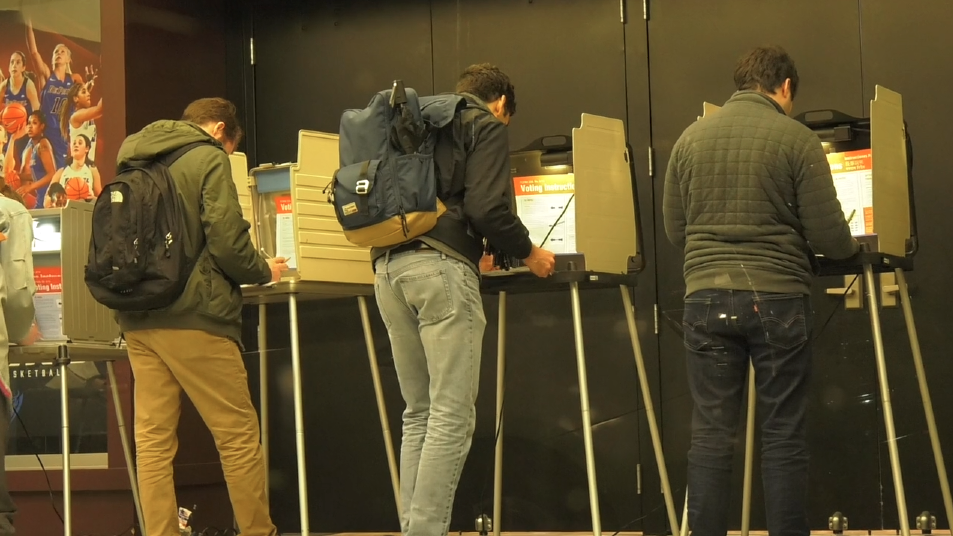By Doug Greenberg
Medill Reports
CHICAGO — One of the most important questions ahead of the Nov. 6 midterm elections was whether young people would shed their historic apathy about electoral politics and show up to vote.
The early answer: Young people did their part. In fact, they came out in droves.
Preliminary figures released by the Chicago Board of Election Commissioners suggest dramatic increases in the number of young voters. Voters aged 25-to-34 cast 174,591 votes in Chicago, the board said, making them the second largest group to vote behind the always-strong 65-and-up bracket.
Additionally, the Center for Information & Research on Civic Learning and Engagement (CIRCLE) estimates that roughly 31 percent of all Americans aged 18-to-29 turned out to vote this year, which would be by far the largest nationwide youth turnout in a midterm since the organization began using its methodology in 1994.
At the polling place on DePaul University’s Lincoln Park campus, enthusiasm was high.
“We’ve had great turnout today,” said election coordinator Gale Miller. “Lots of young people came early this morning.”
While there are hot button issues during every election year, the 2018 midterms were unique in their ability to mobilize the youth to actually get to the polls, in contrast to 2014, for example, when CIRCLE estimated that only 21 percent of young voters cast ballots. Many of those on and around the DePaul campus were energized by what happened in the 2016 presidential election.
“Honestly, who our current president is,” said Katie Johnson, 27, referring to what made her want to come out and vote Tuesday. “Not necessarily for who he is, but just so that my voice can be heard.”
“Everyone from the rest of the world watched what happened here and they wondered why it happened,” said Patrick Hynes, 25, who moved to the United States from Ireland in 2016. “I realized that this was a chance for me to help change what had happened before.”
Many of the voters found inspiration from the media, such as Internet communities and comedy talk show personalities. Many creators in the space made concerted efforts to get young voters to the polls leading up to the election.
“I frequent The Donald on Reddit,” said Tony Carbone, 19, referencing a Donald Trump-focused community on the popular Internet aggregator. “I’ve taken a lot of support from that.”
“Samantha Bee has this game called “This is Not a Game,” said Eva Schulte, 22, a first-time voter, referring to the Democratic comedian. “It was like ‘Yeah, thank you for reminding me 15 times a day that I need to vote.’ It’s nice that celebrities are doing things like that.”
Although the turnout and spirits were high, the truth is that the majority of young people stayed home. Though the numbers released by the CBEC are encouraging, the 18-to-24 and 25-to-34 brackets are the only two with turnout rates under 50 percent, though the latter barely missed the mark at 49.47 percent and could break that barrier as the last of the votes are counted. Many voters that are in or just out of college still seem to believe that the issues don’t affect them as much.
All the same, many millennial voters cast ballots for the first time, seeing voting as a civic responsibility, especially in the context of a politically-charged climate in 2018 and the contentious Illinois races.
“I’m from Seattle, Wash., so I feel like me voting makes less of a difference there,” said Schulte, referring Illinois being a state with a Republican governor before the election. “It’s not going my way anymore so I feel more like I have to [vote].”
“This is my first midterm election, actually,” Johnson said. “It’s a democratic right and if I didn’t take advantage of it, I wouldn’t be doing my duty.”


